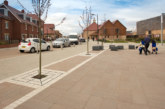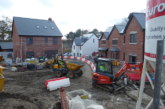
Andrea Gardner, Sales & Marketing Director at luxury housebuilder Waterstone Homes, explores how the requirement for providing public art can become much more than a planning obligation.
All developers will be aware of Section 106 agreements. Part of the Town and Country Planning Act 1990, the agreements are a legal requirement for developers, both commercial and residential, to provide a financial contribution towards public art where developments are proposed.
Sitting at a standard figure of 1% of the development budget, the idea is that the contribution will give back to the community, mitigating the impact of a development on the local area. The public art can take the form of anything from physical sculptures and building designs, to landscaped gardens and the development of community facilities and events – the aim is always to create something that benefits the local community.
Unwanted features
However, the notion of ‘public art’ often draws up unwelcome thoughts of expensive, unsightly and unwanted sculptures that have been dumped on residents’ doorsteps without any consultation. The problem is that, aside from a vague line in a mission statement, planning rarely takes into account the views and desires of the public – the very people the art is supposed to benefit.
A large part of the issue is a general perception towards such legislation as unavoidable and unwanted obligations that need to be ticked off a list to secure planning permissions. This approach means that little thought is put into public art – developers have a pot of money that needs to be spent on public art, but unsure what to do with it, they hand it over to consultants to create art out of it, having very little, if any, involvement in the process.
Community engagement
This doesn’t have to be the case. Done well, public art can benefit a community and give something back to residents if they have suffered disruption as a result of a development. Successful public art can also improve an environment, making it a more attractive place to work or live, boosting the value of local property.
Key to the success of public art is engagement with the community. It’s absolutely vital that residents are involved in consultations and planning: the wider the engagement the better. Consequently it is important to try to reach those who aren’t always represented through regular channels such as community committees and tenant associations.
For us, community engagement has been integral to our approach to public art. Over in the coastal village of Ogmore-by-Sea, our public art spend will be put towards a community hall for the area, something the residents had expressly requested at consultations. Our upcoming development in the rural village of St Nicholas will see us work closely with the local school to see how our budget can benefit them.
With a collaborative approach and creativity, public art can be an effective and meaningful way for property developers to add value to a community, as well as strengthen their own business reputation.








